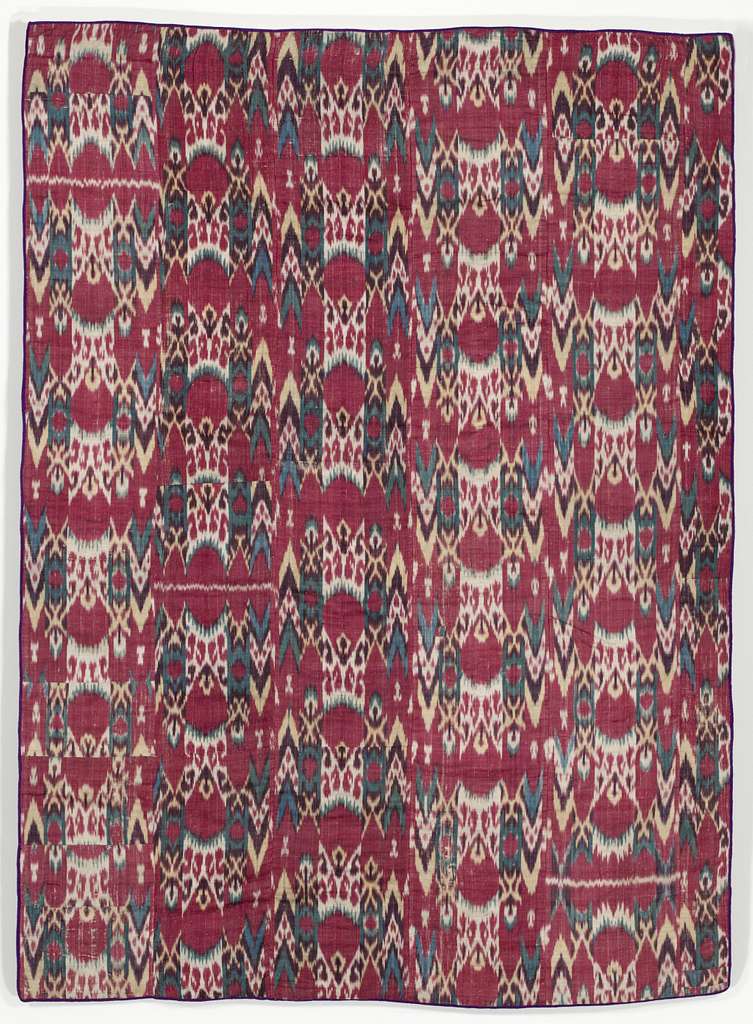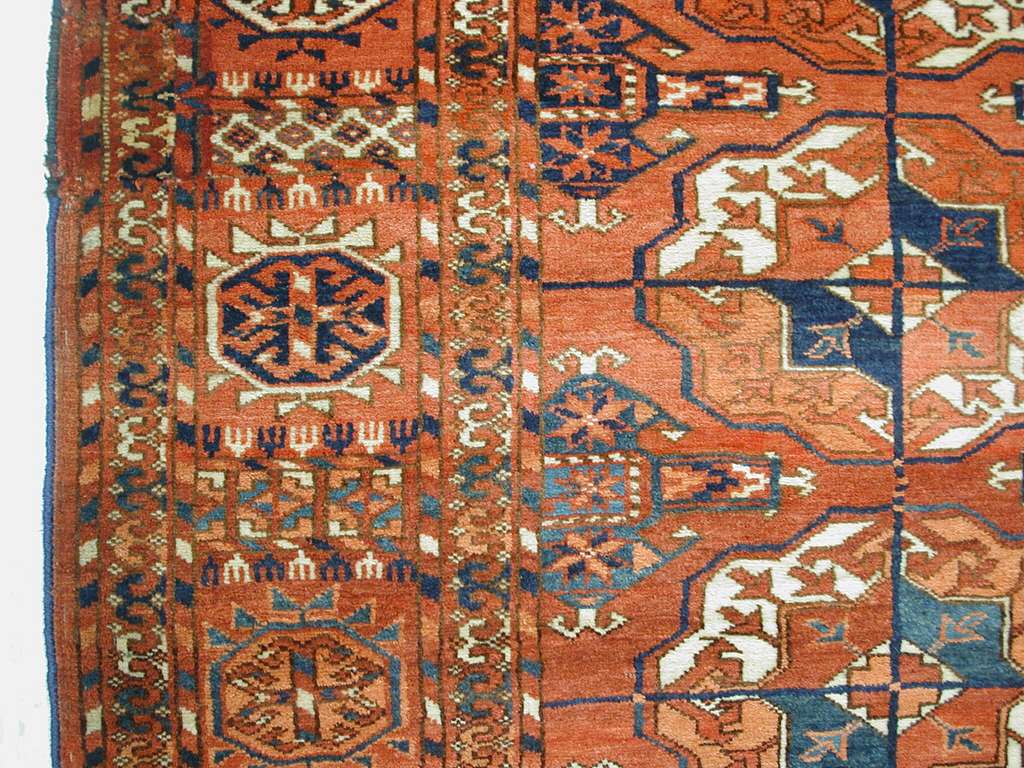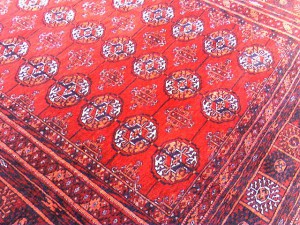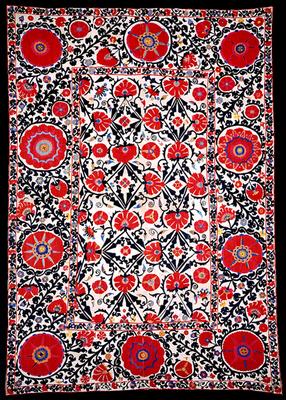Magic Carpet Ride to Bokhara
Bokhara is a city or great beauty, thus everything that is related to this places carries the splendor of its colors and ancient culture, the images of the shining sun and rising phoenixes. The city is full of colors, luscious scents, gardens, and flowers. At the same moment Bokhara is the name used for the rugs with a specific design have been made by the Tekke tribes in Central Asia. It is one of the most important Turkmen tribes in the area. Their rugs can be easily recognized due to the brick red color and other elements of the design such as diamonds, lozenges, and flowers.
Design and Symbolism
At the heart of a Tekke or Bokhara rug lies a meticulously crafted central field, adorned with rows of guls (tribal crests) and a mesmerizing array of geometric patterns. The dark red base of these rugs is beautifully contrasted with accents of light and bright blue, green, white, and yellow, creating a visual feast that captivates the viewer. The dyes used, including madder for red and indigo for blue, along with a mysterious yellow dye, combine to produce a palette that is both vibrant and harmonious, limited to no more than eight colors in a single rug.

Rows of guls and geometric patterns make the main elements of the central field of a Tekke or Bokhara rug and carpet
The design of the rugs weaved by the Tekke tribes consists of a central field and colons of minor and major Tekke guls or flowers. These rugs are of dark red color, but they include light and bright blue and green, white and yellow. They use three main dyes, madder, indigo and a yellow dye that is still a mystery. Their combination generates other colors that never exceed the number of eight in one single rug.
The Bokhara rugs that once have traveled through the Silk Road from Turkmen tribes to other parts of the world, continue to be one of the main products that Tekke tribes continue to make in order to meet their needs and the increased demand from western countries. The members of the tribes who have always spent their life in tents have thought about rugs as floor covering elements that that protect them from the cold. Hence, like all the other tribes that live in middle or in the Far East, they started to weave carpets and included designs that reflect main elements of their culture.
Although that the Bokhara carpets look similar, there are no two identical handmade rugs. The fact that the Tekke use an asymmetrical knot doesn’t affect the overall symmetry of the rug. The flower, gul, one of the main motifs of these rugs is enclosed within a pattern named the elephant foot. Rows of guls and geometric patterns make the main elements of the central field of a Tekke carpet. In the case of Bokhara rugs, the color is of the indicators that define the age of the rug. Strong green is present in older Tekke carpets when they have been well-preserved.
These lovely little red rugs full of guls and geometrical shapes are very precious and highly desired by western buyers, as an element that is strongly related to the tribal culture of Turkmen people.
A Testament to Tradition
The Bokhara rugs, having once traversed the Silk Road, continue to serve as a vital cultural expression and a source of livelihood for the Tekke tribes. These rugs, initially crafted as functional items for floor covering and protection against the cold in nomadic tents, have evolved into symbols of cultural identity and artistic expression. The intricate designs woven into each rug reflect the core elements of Tekke culture, telling stories of their heritage and worldview.

Uniqueness and Craftsmanship
No two handmade Bokhara rugs are identical, a testament to the unique craftsmanship of the Tekke weavers. The use of an asymmetrical knot contributes to the rug’s durability and aesthetic appeal, without compromising the overall symmetry of the design. The iconic ‘elephant foot’ pattern, encompassing the gul motif, and the harmonious geometric patterns are distinctive features of these rugs, making each piece a work of art.
The Color as a Chronometer
In the realm of Bokhara rugs, color not only adds beauty but also serves as a marker of age. The presence of strong green hues is often indicative of older Tekke carpets, signifying their preservation and historical value. This color evolution offers collectors and enthusiasts a glimpse into the rug’s journey through time, adding another layer of intrigue to these already captivating pieces.
Cultural Treasures of the Tekke Tribes
Bokhara rugs are more than just decorative items; they are precious treasures that embody the rich tribal culture of the Turkmen people. Their popularity in Western markets underscores a global appreciation for tribal art and craftsmanship, bridging cultures through the universal language of beauty and tradition. As symbols of a deeply rooted artistic heritage, Bokhara rugs continue to enchant and inspire, carrying the legacy of the Tekke tribes into homes around the world.




